Being a CEO, a motivational speaker, and digital influencer, Ivanilson Machado has been chosen as one of the 100 young African Economic Leaders under 40 since 2016. His art collection is focused on Angolan, and wider African artists, including names such as António Ole, Monica de Miranda (included in this year’s Venice Biennale), Esther Mahlangu, Cristiano Mangovo, Ana Silva and Beto Gatti. Stemmed originally from a reflection of his personal taste, Ivanilson’s ambition has grown to build his art collection as a representative archive of the Angolan contemporary thinking.
LARRY’S LIST had a conversation with Ivanilson, who discussed on his perceived role in the Angolan art scene as an art collector, his most treasured artwork, some emerging Angolan artists we should watch out for, as well as how much he looks forward to 2025 as an exciting time for art in Angola as the country celebrates its 50th anniversary of independence.
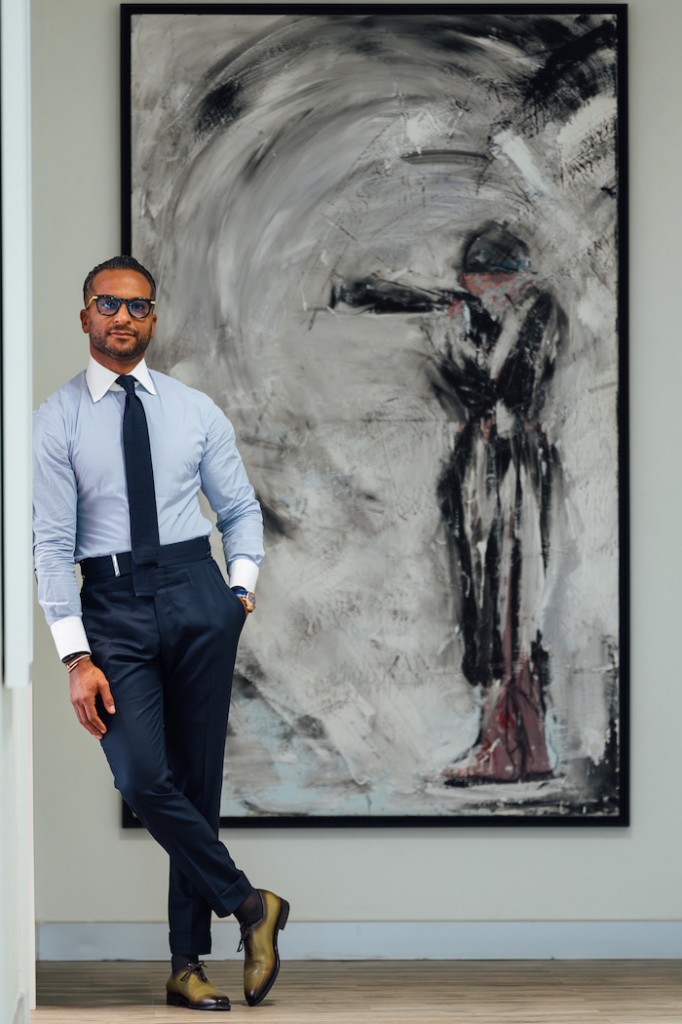
What made you want to start collecting art? What is the main motivation behind your collecting?
Beyond a personal passion for collecting, I am also motivated by the importance of supporting the incredibly talented artists we have in Angola and on the continent. Through my work at Pumangol, I have always understood the importance of giving back to local communities, to build opportunities together. Without collectors and patrons supporting our creatives, it can often lead to artists seeking opportunity elsewhere, meaning Angolan audiences wouldn’t receive all the benefits of a local arts scene. In the past few years, we have witnessed a growth in art markets across Africa – Lagos, Accra,and Cape Town to name a few – and these have all succeeded by remaining rooted in their hometown audiences.
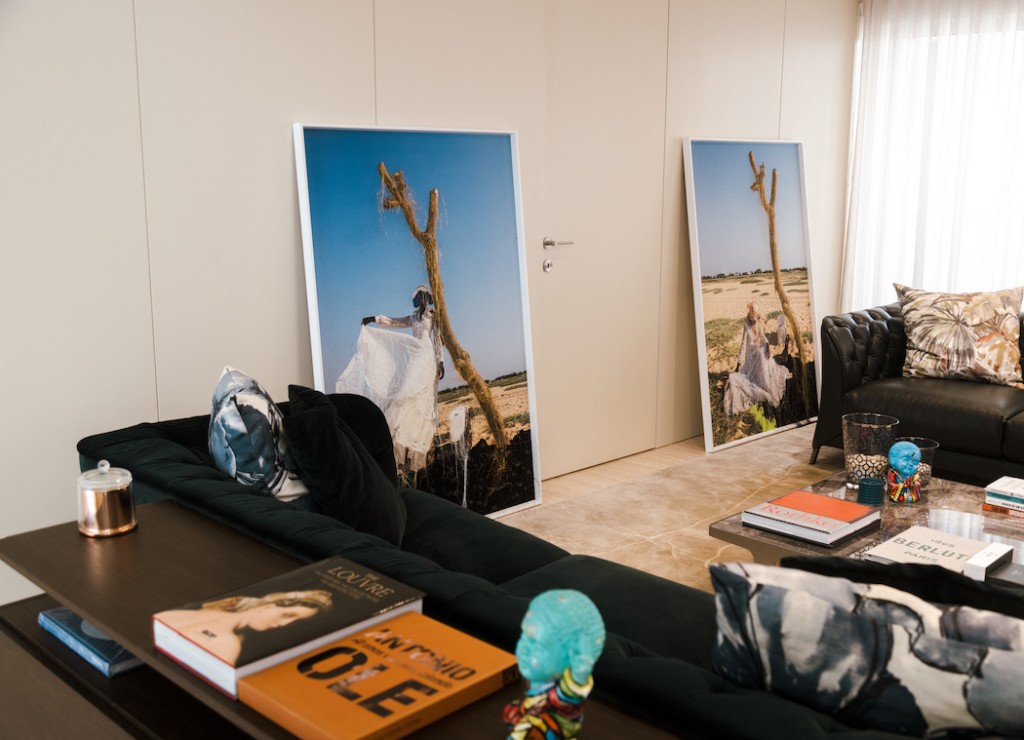
When did you fall in love with a piece of art? What was it?
It was when I was reading a magazine and I saw an interview with Portuguese president Marcelo Rebelo de Sousa. He was visiting Binelde Hyrcan’s atelier during his stay in Luanda. And there was an amazing piece behind him in the picture…immediately I started looking for Binelde, but I knew that a lot of people are interested in that piece.
Eventually, I was able to buy it, and it’s now one of my favorites in the collection.
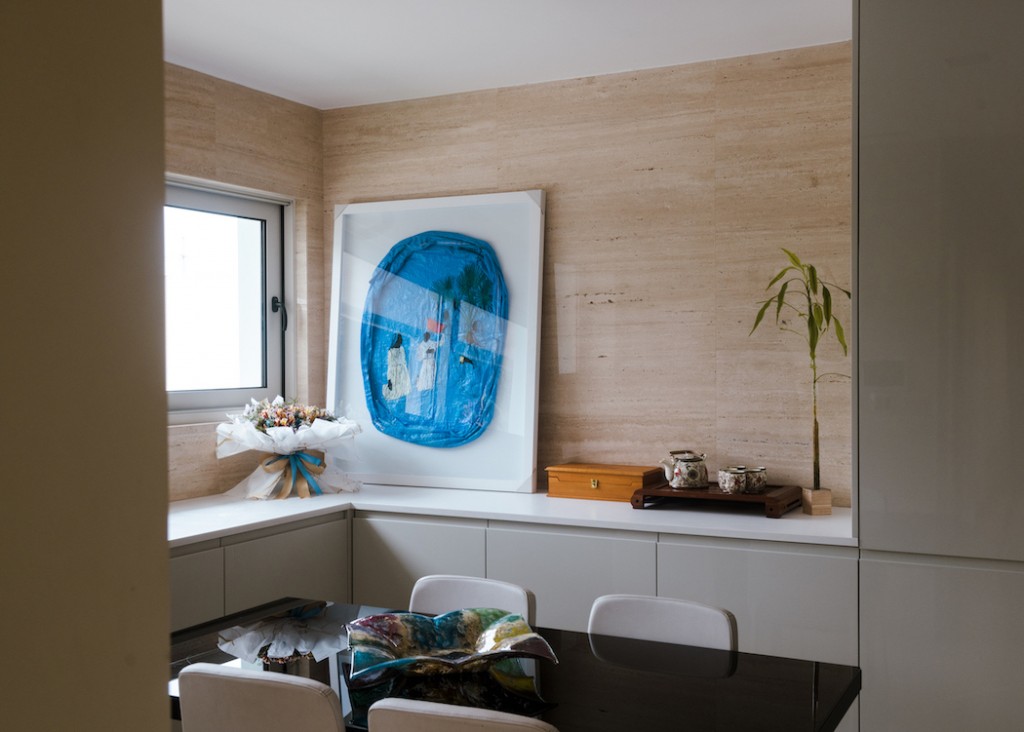
What is your focus regarding the artists in your collection? Are you more interested in emerging or renowned artists, local or international artists?
My collection includes art from a variety of countries across Africa, Europe and South America, but my main focus at the moment is on the work of Angolan artists. That’s partly because I live in Luanda, and I see how it’s too often overlooked as an artistic center; but also because there’s simply so much fantastic art being created here. My collection includes a combination of emerging artists as well as more prominent names, such as Kiluanji Kia Henda, Binelde Hyrcan, Yonamine, Paulo Jazz, Kapela, Fernando Alvim, Van, Mónica de Miranda, Ester Mahlangu, Antonio Ole, Mangovo, Kobra, and Beto Gatti, to name a few.
What is the theme or the type of art that unites all the works you have acquired?
I can’t say there is a theme per se. My collection, The Legacy Collection, was initially more a reflection of my personal taste, but now as the collection is growing, I want it to represent an archive of the Angolan contemporary thinking as well as including works from other regions around the world.
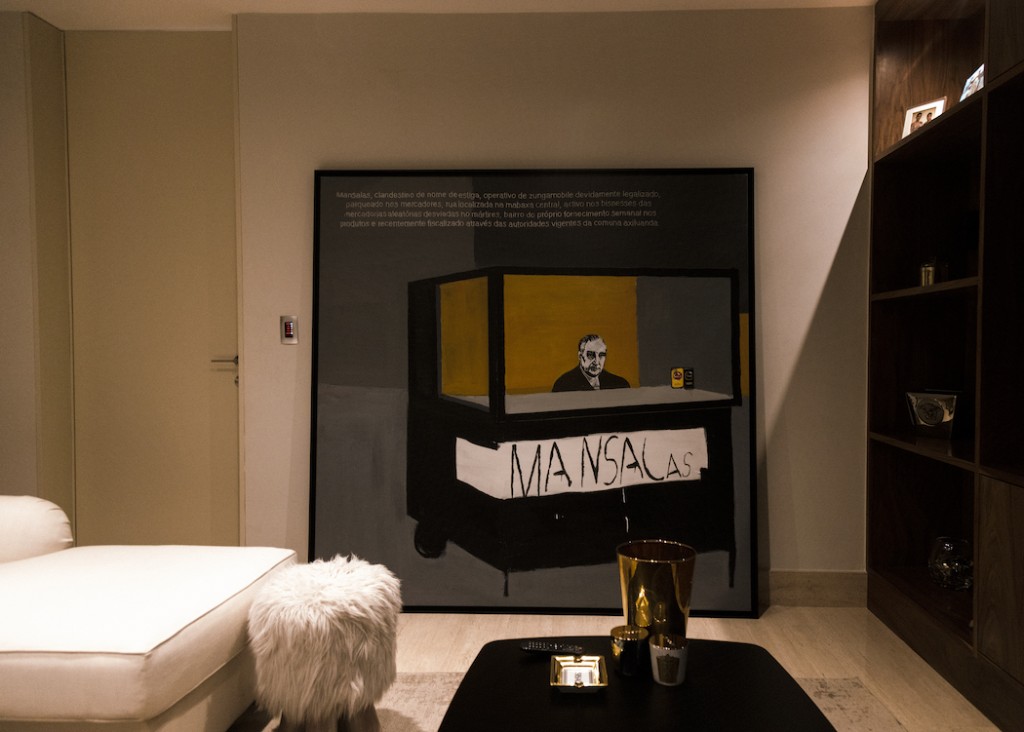
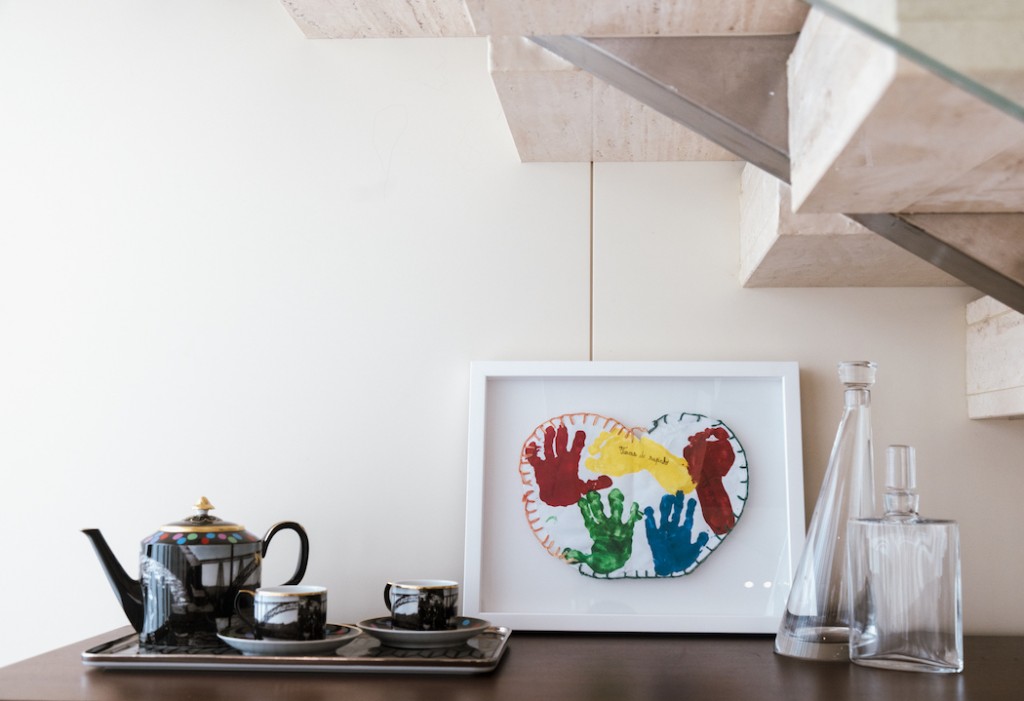
What were the first and the latest artworks you purchased?
The first work I acquired was titled “ASCENSION” by Guilherme Mampuya. It’s a piece with a great meaning for me because it’s linked to my personal career.
The latest was a photograph by Monica de Miranda called “Creole Garden” from her Greenhouse series, which I purchased after I had the pleasure of visiting the Portuguese pavilion in Venice that was co-curated by Monica.
How many artworks do you own? Where do you display your collection?
The Legacy Collection has more than 100 works, with a mix of painting, sculpture, and photography. The works are currently at my home and in my office in Luanda, as well as at my home in Lisbon.
Have you ever presented, and would you wish to present, your art collection publicly?
I haven’t yet, but that is a goal of mine, to share my collection with the public in Luanda and overseas. Also, I would like to loan institutionally to give visibility to our local talents and talents from other African countries.
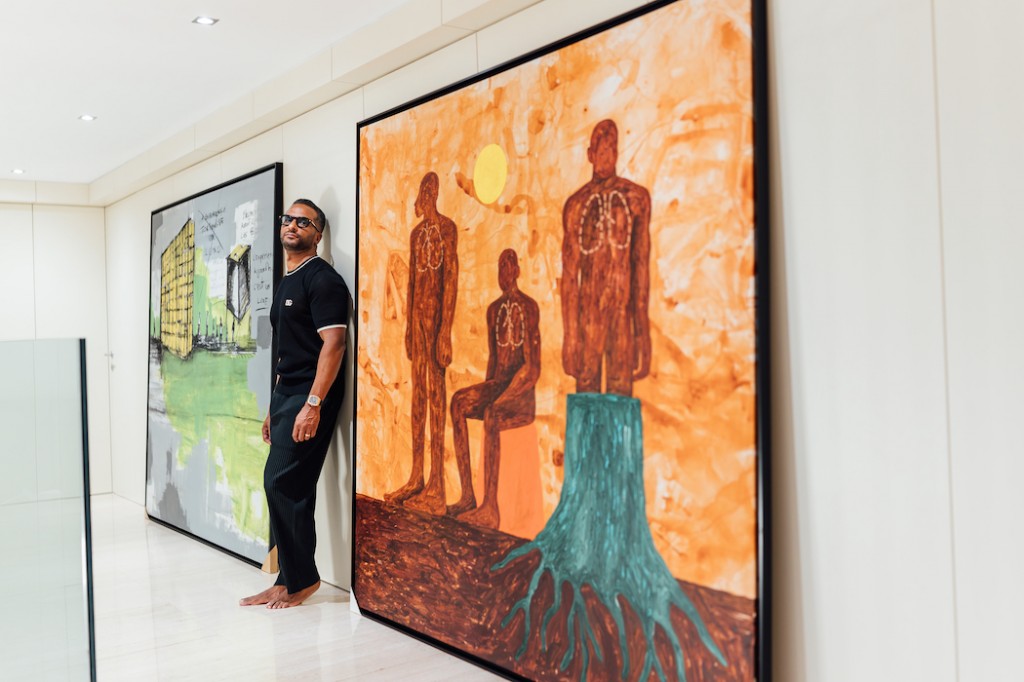
What considerations guide you to make a purchase?
First and foremost, I am guided by my personal passion—but I find your eye can be honed by attending fairs, galleries and museums around the world, and just taking it all in. I’m currently also increasing my network of collectors and curators to support this.
I take inspirations from artists on show at biennials – the Venice Biennale this year of course showed a wealth of talents from Angola and beyond; this year in the Arsenale, it was amazing to see the works of Kiluanji Kia Henda, and Sandra Poulson who was part of the Biennale college. I was also lucky to work closely alongside Mehak Vieira from Jahmek Contemporary Art, who was an inimitable guide.
I see a key part of being a collector as a way to support infrastructure for the arts in Angola, so I’m always keeping an eye out for promising artists at an early stage in their careers and supporting wherever I can.
What is your most treasured artwork?
Honestly, I have many, but a triptych from Antonio Ole is special to me because it’s an amazing work done with fire technique that I saw on his DVD, and after that I started looking for those pieces. As you can imagine, since it’s presented on his film, it’s an important artwork in The Legacy collection.
How important is it for you to meet the artists who created the artwork?
It’s an amazing experience, especially if you build a long-term, close relationship with the artist. Recently, I was impressed by the work of Beto Gatti, a Brazilian artist introduced to me by a close friend of mine. Beto has exhibited his work all around the world, but the one on show in the international airport of Rio de Janeiro was the one that really blew me away. When I first met him, I was curious about the story behind the piece, and immediately I wanted one for my collection. The piece is titled “SAUDADE”…
More broadly, Luanda has a buzzing art scene frothing with talent and inspiration, so it’s a pleasure to spend time with these ambitious and brilliant artists. Having relationships with artists reminds me why it’s so important to be building this collection now and for the future, and I’m so pleased to be part of this story.
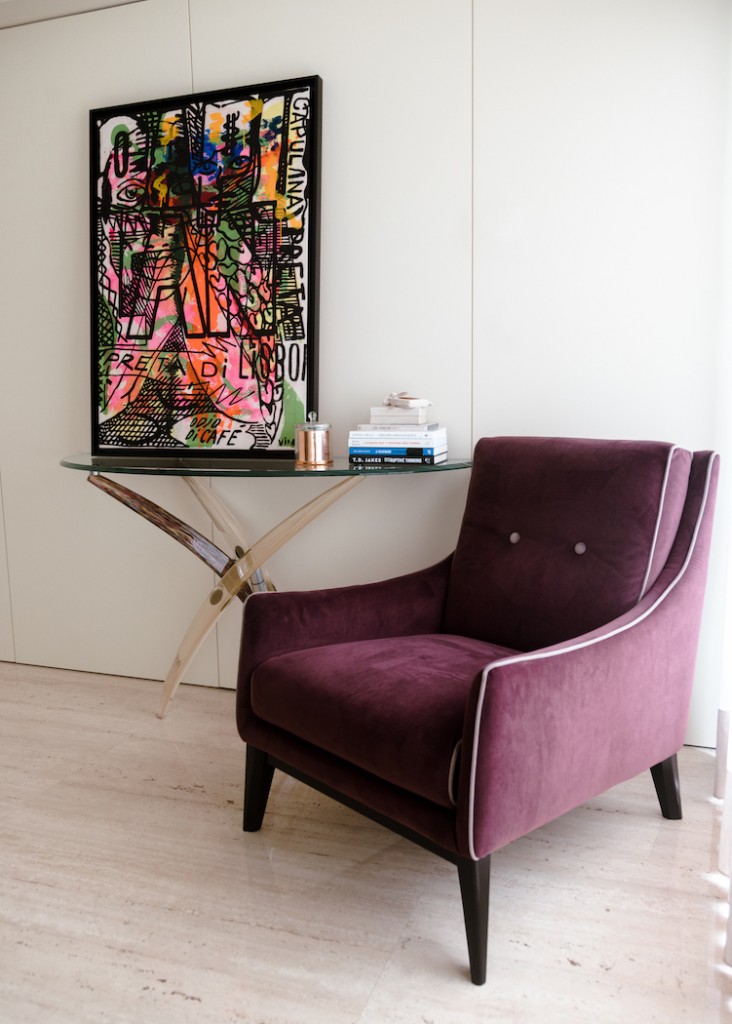
The Art World
How is the Angolan art scene nowadays?
There has always been a lot of artistic talent and inspiration to be found in Angola, but I’m pleased to see that the rest of the world is starting to recognize it, and that there are more platforms to support and grow this talent. We’re seeing more opportunities for Angolan artists to develop and explore their craft, such as through artist residencies; also, it has been important for me to support artist-led initiatives.
What is the most interesting about Angolan contemporary art?
The Angolan art scene is hugely exciting and varied, but what I’m pleased to see is a lot of artists engaging with their cultural heritage whilst also addressing contemporary issues. For example, Sandra Poulson’s recent booth at Art Basel saw the artist explore the gun as a domestic object following a long period of violence in Angola. Ana Silva, whose work I also collect, has similarly used found objects picked up during her walks in the markets of Luanda, such as raffia bags or doilies, to explore her relationship with her family and homeland. These works offer poignant commentaries on the artists’ personal experiences and on Angolan society more broadly.
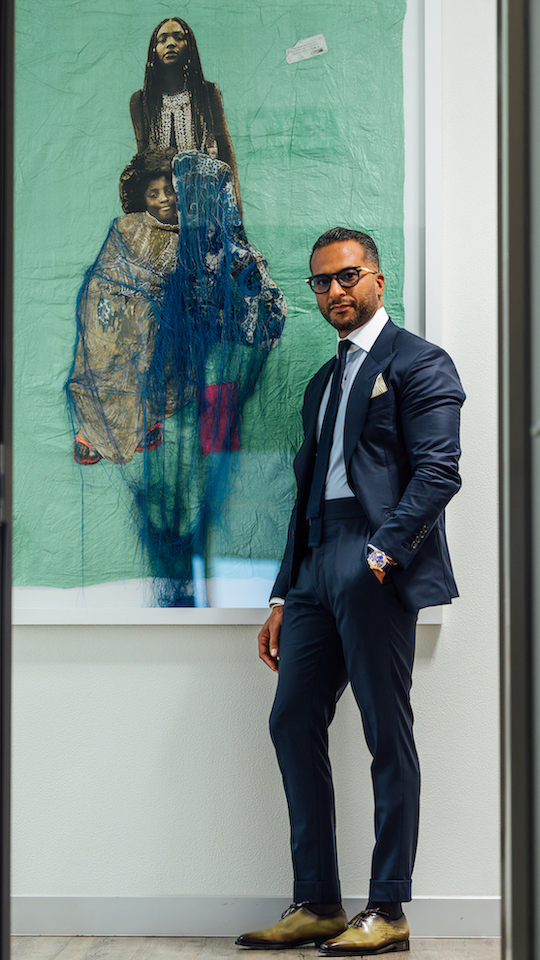
What is your advice to collectors who are interested in discovering some Angolan artists or knowing more about the Angolan art scene?
Of course, I recommend everyone to visit Angola! Familiarize yourself with galleries in the region, but you can also increasingly see works by Angolan artists in international galleries, fairs and biennales around the world, which is great to see..
Can you name emerging Angolan artists who should be on our radar?
Sandra Poulson, Osvaldo Ferreira, and Ana Silva.
What are you especially excited about regarding art in the upcoming year?
I am excited about a project called UPANGA created by Pumangol with the Angolan visual artist, Binelde Hyrcan. The project will work with renowned artists across the 18 Angolan provinces to create installations in our most iconic stations across each city to give visibility to local talent. This project is a way to access and showcase new talent, sharing their experience and knowledge with local communities, and together create work that will live on in public spaces.
2025 will mark 50 years of Angolan independence. I know the country is planning a lot of exciting initiatives around that, and no doubt, a lot of this will be rooted in our cultural sphere. 2025 will be a very exciting time for art in Angola, and I look forward to sharing that with the world.
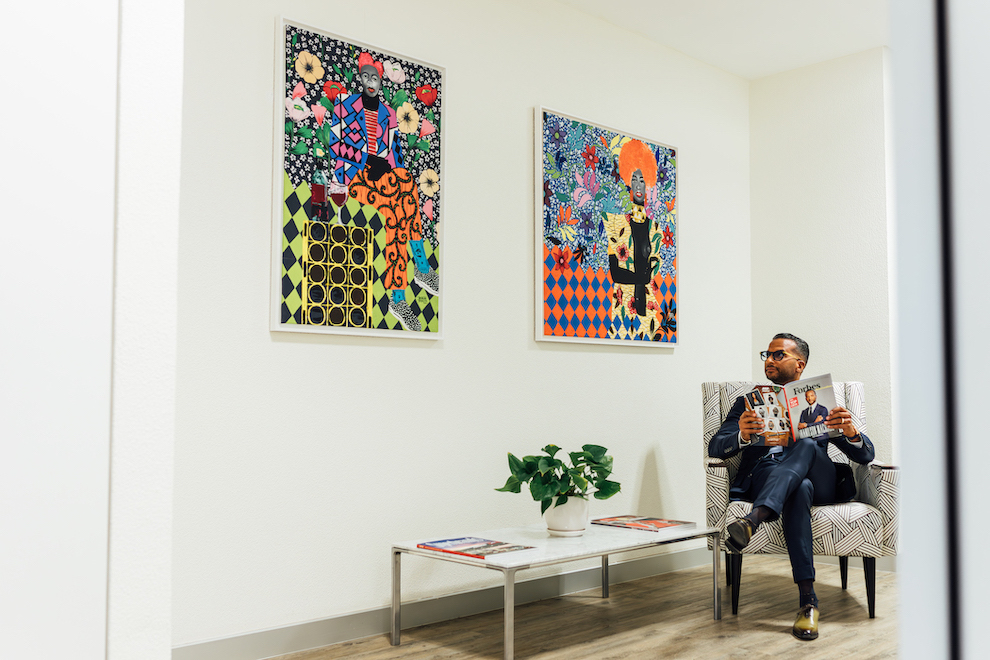
Instagram: @ivanilson.machado
A selection of artists Ivanilson collects:
Ana Silva
António Ole
Binelde Hyrcan
Monica de Miranda
Osvaldo Ferreira





